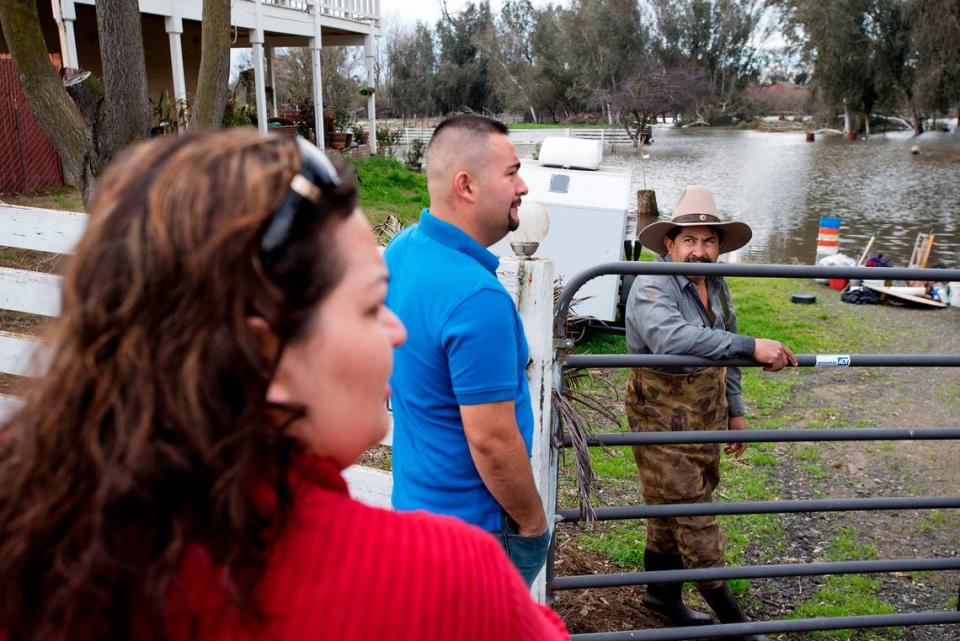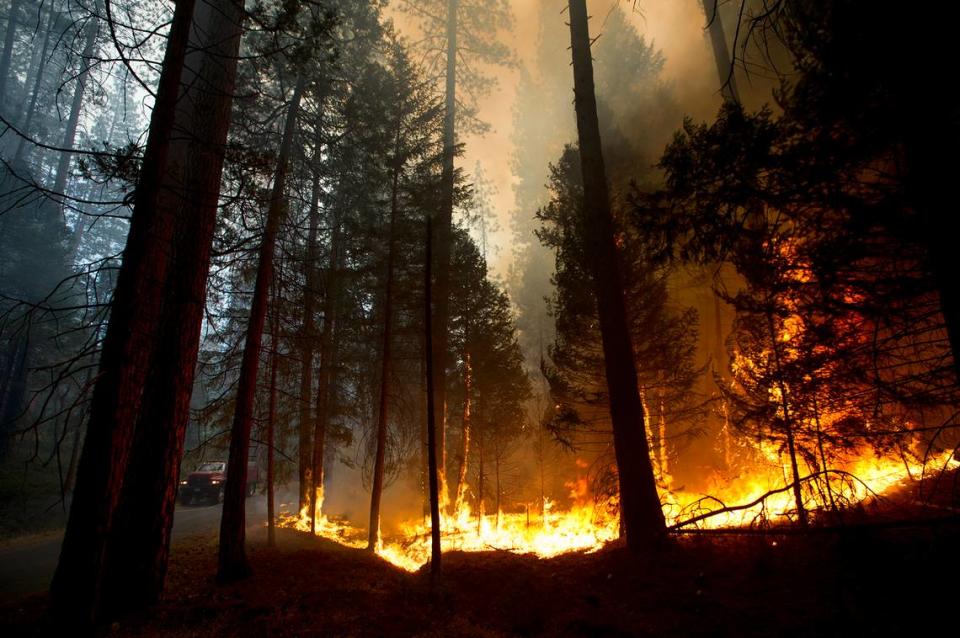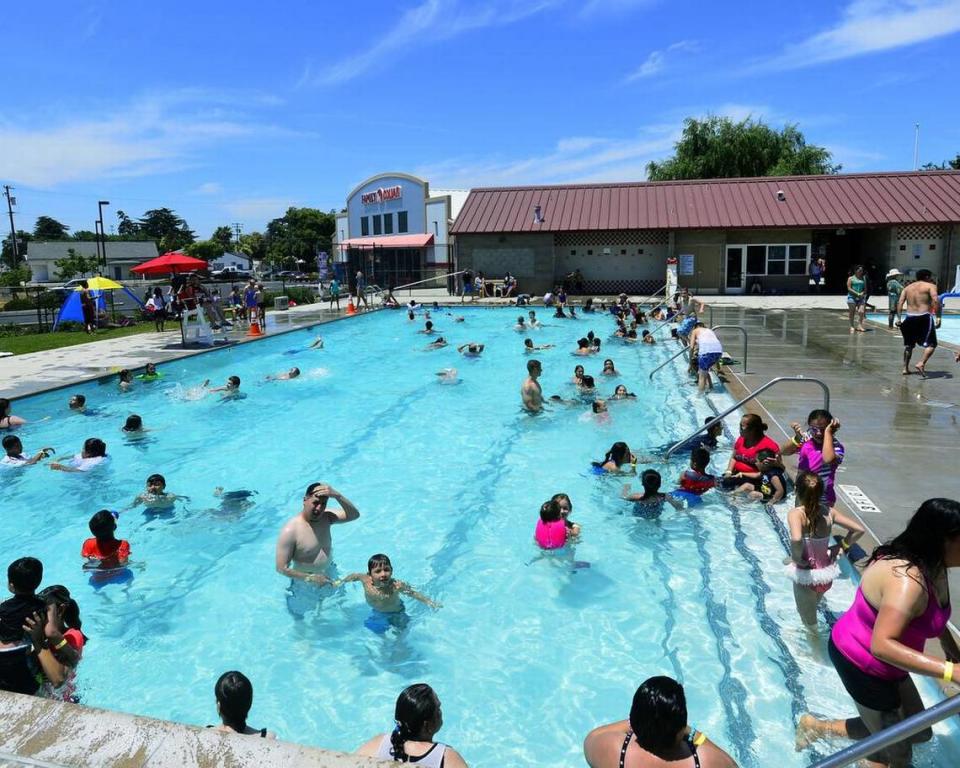Severe heat waves, longer drought among climate impacts expected in Stanislaus County
This is the first story of a Modesto Bee series on climate change impacts for Stanislaus County. A warming environment will bring severe heat waves, health hazards, longer droughts, impacts on schools, problems for agriculture and water management, and many other changes.
The Northern San Joaquin Valley is known for hot summers and is projected to get much hotter with global and regional climate change in the next 25 years.
Studies conclude the average maximum daily temperature will increase 4 to 5 degrees in the San Joaquin Valley by 2050, raising temperatures above 105 degrees more than 20 days in some years.
In addition to heat waves, climate change promises longer and more intense droughts, more wildfires, extreme storm events and flooding in wetter years, and worsening air pollution.
The climate conditions will come with health impacts for people who live in the Valley stretching from Stockton to Bakersfield, a region that’s projected to be one of the hardest hit in California.
The Modesto Bee will run a 10-week series of stories on the health impacts and other challenges as climate warming upsets the normal state of affairs in Stanislaus County.
While the county has its climate-change deniers, top water managers recognize the need to plan for the shifting environment.
The Modesto and Turlock irrigation districts, a major source of water and energy service for the county, said in a recent statement they are spending significant time studying and planning for climate change implications.
“The Tuolumne River watershed hydrology is changing, the wet years are getting wetter and the dry years are getting drier for longer periods,” the districts said. “Our storage and conveyance system were designed for different hydrology.”

The districts said they are harnessing the latest technology and exploring operational changes and new projects to “ensure we can provide the same essential services for the next century.”
The climate changes coming to the Valley have been studied by state agencies, university scholars and nonprofit research groups. According to climate change science, use of fossil fuels is chiefly to blame for the buildup of carbon dioxide in Earth’s atmosphere, which serves to trap the sun’s heat.
If there is no action to reduce C02 emissions worldwide, studies conclude, the average maximum daily temperature will increase 4 to 5 degrees in the San Joaquin Valley by midcentury and could increase 8 to 11 degrees by late century.
In Stanislaus County, the daily high temperature, averaged over the year, is projected to rise from 73.6 to 78.3 degrees, depending on carbon dioxide emissions, and it could exceed 80 degrees near the end of the century. The county will see four times the number of unusually warm nights by 2050, a state assessment predicts.
Severe heat waves are expected to roast the San Joaquin Valley with a heat index of 105 degrees or above. At that point, healthy people are at risk of heat-related illness and the vulnerable, including children, seniors and those with chronic illness, especially need protection.
By 2050, the projection for Stanislaus County is 10 to upward of 25 days of 105 degrees or more each year, compared to two of those days this year. Some parts of the Valley, including Fresno, are looking at a full month of that hellish heat by midcentury and almost two months by 2100, according to a Union of Concerned Scientists analysis.
UC Merced has a toolbox online for projecting climate conditions based on different levels of carbon dioxide emissions that trap heat in the atmosphere.
Stanislaus County’s average daily high temperature June through August is 94 degrees, up from 92.5 in 2000. By 2055, it’s expected to climb to 96.3 if actions begin to decrease C02 emissions globally in 2040. The average will be almost 98 degrees if nothing is done.
Without action, daily highs of 102 will be the summer norm near the close of the century. The county’s daily summer average could reach 107 degrees some years.
Extreme heat waves will strain the electrical grid and pose a serious threat to anyone who works outside. The infrastructure for storing Sierra runoff and generating electricity for customers wasn’t designed for what’s purportedly coming to the region.
“It’s what keeps me up at night and makes me worry about how much harder it is going to be for our kids later in this century,” said Noah Hughes, an earth science instructor at Modesto Junior College who regularly tracks the weather.
Higher temperatures will mean that more of the precipitation in the Sierra Nevada is rain and less is snow. The runoff will come roaring down the rivers earlier in the year and reservoirs will capture less storage from the shrinking snowpack.

More wildfires predicted, worsening air quality
The drier conditions will lead to more wildfires, fouling the San Joaquin Valley air with smoke and pollutants.
“The wildfires increase the particulate matter in the air, and that increases the potential for health impacts,” said John Abatzoglou, a UC Merced climatologist who spoke about the changes at Modesto Junior College last January.
San Joaquin Valley residents already endure some of the worst air quality in the United States. Even dirtier air will contribute to health impacts including lung disease, asthma and cardiovascular damage.
Excessive heat can be deadly for those outdoors, while higher daily temperatures also encourage vector-borne diseases.
Health experts have suspected that climate warming conditions — excessive winter storms, dry-out periods and wind — have spawned an increase in annual Valley fever cases since the early 2000s.
A hotter climate also creates complications for pregnant women.
Hardships for disadvantaged communities
Angel Santiago Fernandez Bou of the nonprofit Union of Concerned Scientists said the many disadvantaged communities in the San Joaquin Valley are not equipped to protect themselves against a climate change crisis.
“Thousands of families have already lost access to domestic wells,” Fernandez Bou said.
The former UC Merced scholar and lead author of a state assessment of climate change in the San Joaquin Valley foresees dire hardships for field laborers.
“If you are able to work indoors, you are OK, but farmworkers have to work in the field,” the scientist said. “There is no way to avoid that. The work is very demanding on bodies and, when they go home, they can’t afford to turn on the air conditioning. People are afraid to open windows at night because of pesticides that were sprayed, and they can’t cool down their bodies.”
Fernandez Bou noted that when he studied for a doctorate degree at UC Merced, his adviser said there used to be two extremely hot weeks in Merced each year, but now only a couple weeks in summer are acceptable.
Steve Murov, a professor emeritus in chemistry at MJC, has worked to inform the public about the changing climate by arranging education events at the community college.
“The sentiment across the country is changing,” Murov said. “More than half the people accept it as reality, but I don’t think they are aware of the severity. … Some of these things are reversible to some extent. We had better act, or else.”
This article drew information from the Governor’s Office of Planning and Research Fourth Climate Change Assessment ; the Legislative Analyst’s Office ; UC Merced Climate Toolbox ; Union of Concerned Scientists ; Public Policy Institute of California ; Central Valley Health Policy Institute and other sources.


